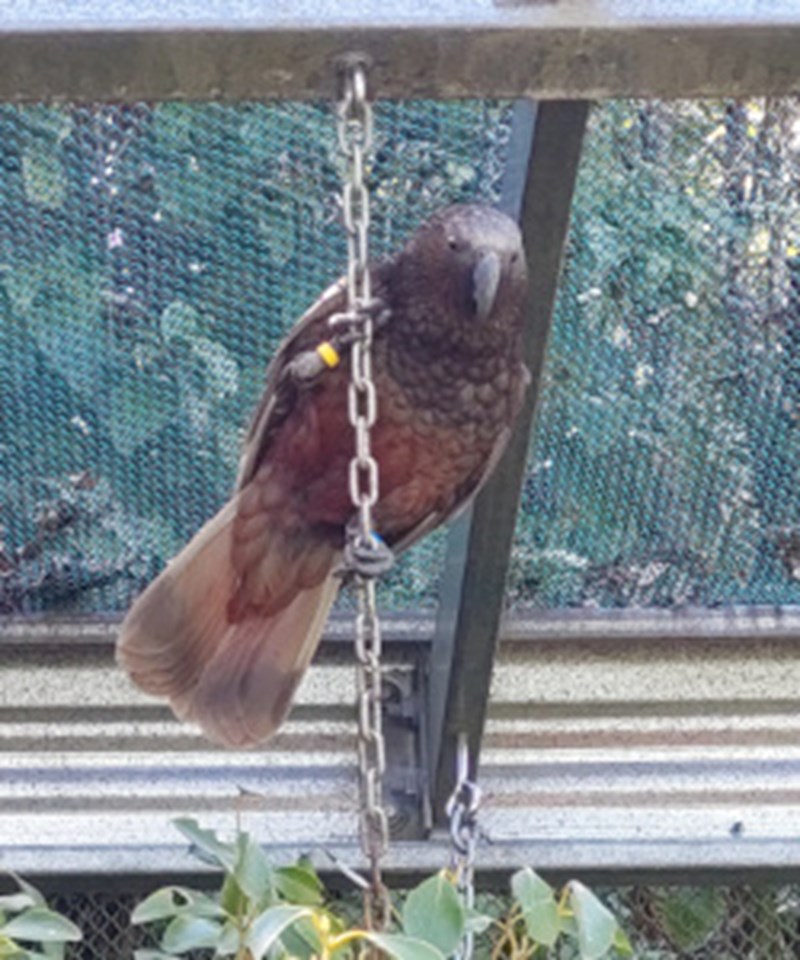
A wing and a prayer
Three kākā were welcomed to the Boundary Stream Mainland Island Reserve aviary by the Maungaharuru-Tangitū Trust, the Department of Conservation, Rayonier Matariki Forests and community volunteers as part of a collaborative effort to bolster numbers in the Hawke’s Bay region.
The large forest-dwelling parrots were translocated from the Pūkaha National Wildlife Centre in the Wairarapa, growing the introduced population to around 30.
Hinemāia, Taua and Wera, were named by the three iwi/hapū that share the Maungaharuru range - the Maungaharuru-Tangitū Hapū, Ngāti Hineuru and Ngāti Pāhauwera. Koro Matiu Eru from Maungaharuru-Tangitū carried out karakia (blessings) both on the birds’ arrival to the aviary on 13 October and before their release into the wild on 19 November.
The birds have been waited on daily by volunteers, including the Rayonier Matariki Forests Hawke’s Bay team, who clean the aviary and feed them their varied diet of fruit, vegetables, nuts, seeds, fresh vegetation, and the bird equivalent of a protein shake.
The kākā have become increasingly confident and inquisitive and will eat food from an outstretched hand and land on the head of those entering the aviary – particularly if they’re wearing glasses!
Callum Beattie, Kaitātari Kaupapa Here (Consents & Policy Analyst) for Maungaharuru-Tangitū Trust, says the ability for continued translocations of birds to Maungaharuru is the result of many years of intensive predator control.
“This year, our ‘Manu Tāiko’, a crew funded through Jobs for Nature, has been contributing to that effort within and around Boundary Stream. It has also been awesome to see so many other passionate Hapū members looking after the kākā while they have adjusted to life on the maunga. In doing so the Hapū has been involved in all aspects of the restoration of manu to the area and has been exercising their kaitiakitanga (guardianship) of the taiao (environment).
“We are very grateful to Rayonier Matariki Forests for its support of this translocation and grateful to its staff for giving up their time to help us with this continuing kaupapa,” says Callum.
Rayonier Matariki Forests National Environmental Manager, Andy Fleming says the company was excited and humbled to be invited to be a part of this important initiative.
“Our team has really enjoyed the daily visits to the sanctuary and have got so much out of it, knowing they are helping get these kākā ready for their new lives. Encouraging biodiversity in our forests and protecting threatened species is something we’re passionate about,” explains Andy.
Boundary Stream Reserve is home to an existing population of kākā which have also been fed nuts and seeds to encourage them to interact with the kākā in the aviary. Now the kākā have been released from the aviary into the surrounding bush it is hoped that they will join their new whānau.
“We hope they will make their home in the reserve, and that we will be able to spot them flying overhead in the months to come as we go about our work,” says Andy.
This kākā release follows four others since 2013 and there are now several generations thriving in the area.
Boundary Stream Mainland Island covers approx. 800 ha in the Maungaharuru Range, near Tūtira north of Napier and is home to many rare and endangered species such as kiwi, kōkako and kākā, wētā and other invertebrates, and over 220 species of native plants.
It is a part of Poutiri Ao ō Tāne which is an initiative to protect and return native species to northern Hawke’s Bay. The area borders Opoauhi Station which is part of the Esk Forest Joint Venture between Rayonier Matariki Forests and Mangaharuru-Tangitū Trust.
